
Being born in 1853 to an oysterman and his wife in the village of Absecon in New Jersey, John Lake Young spent his life living along the Atlantic shore. A scrappy and enterprising individual, even as a young boy, Young was a businessman who had a talent for eyeing potential business opportunities and turning them into profitable ventures.
Having been left fatherless at the young age of three, he forgoed attaining a formal education and pursued working instead to support himself and his mother.

By the age of 30, Young was working as a carpenter, performing patch and repair work for the Atlantic City boardwalk and its pavilions. One day while working, Young came upon meeting Steward McShea, a successful baker from Philadelphia.
With Young’s entrepreneurial ideas and McShea’s capital to invest, the two hatched a plan to launch a money-making venture.
Leveraging the popularity of roller-skating at the time, as partners the two built a rink, and opened it for business.
Immediately the rink was a popular hit, and partners quickly earned a lot of money.

Around the same time in 1884, Applegate’s Pier was constructed at the foot of Tennessee Avenue. Standing at 625 feet long, and built with multiple decks, it featured an ice water fountain as one of its main attractions.
Though not the actual first pier built, Applegate’s Pier was the first successful amusement pier built in Atlantic City.

When the popularity of skating waned, Young and McShea decided to refocus their business strategy.
Choosing a location opposite Applegate’s Pier, the partners erected a carousel.
Built by renowned merry-go-round designer Gustav Dentzel, the new ride attracted legions of children and adults alike.
With this new venture, the partners made even more money than they had with their roller-skating rink.
The carousel operated every day of the week. On Sundays, hymns were played on the carousels organs, hymnals were provided to riders, and riders would sing along to the organ music. Sundays proved to be one of the most popular days for ridership on Young and McShea’s carousel.
By 1891 their partnership had amassed enough profits to purchase Applegate’s Pier. Immediately they expanded the pier’s length to 2,000 feet. They renamed it Young’s Ocean Pier, and installed rides, midway games, and even an electric trolley.
To attract more crowds, the two installed an aquarium, ballrooms, and booked regular band concerts. Vaudeville show performances were given in the pier’s theatre.

With the increased earnings from the pier’s improved entertainment, Young and McShea also began raising rents on the merchants who occupied stalls and shops on the pier.
At the end of the pier visitors were permitted to fish for a fee. And ever the performer himself, Young organized a daily afternoon show, where net hauls of fish were unloaded to the enjoyment of spectators.
By some accounts, Young could identify upwards of forty-eight different species of sea creatures caught within his nets, including those which were weren’t even native to the Atlantic Ocean!

Naturally, as with their earlier efforts, the pier was an immediate money-making operation. So profitable, indeed, that McShea retired in 1897, leaving the pier in the sole ownership of Young.
In addition to the fishing and entertainment, Young installed one of Atlantic City’s first amusement rides in 1902, christening it “The Flip-Flap Railroad.” Featuring a 360-degree vertical loop, the ride was actually a rollercoaster, and was an immediate hit with thrill seekers.

Unfortunately, the shape of the rollercoaster’s loop was more of a true circular loop, rather than teardrop-shaped loops that are employed in modern-day rollercoasters.
As a result, riders felt forces of up to 12-gs while traversing the circle. Although many passengers complained and suffered from neck and back injuries, surprisingly the coaster remained in operation until 1912.
Shortly thereafter, in the same year, a fire destroyed Young’s Pier. But ever the showman, Young took advantage of the tragedy. Young charged curious onlookers nickel admission to get a closer look while workers disassembled the charred remnants of his burned-out pier.

Numismatic Specimens
Below please find several numismatic specimens. Traversing twenty years of emissions, each represents the progression of Young’s entrepreneurial ambitions, as well as his pier.
The first specimen heralds from Applegate’s Pier. Listed as NJ-AC-6. It is estimated that the token was struck sometime during the mid to latter 1880s. Such a timeframe fits the period prior to when Young and McShea acquired Applegate’s Pier. Incuse struck on brass and scalloped, the specimen had a value of 5-cents.

The second specimen also dates from Applegate’s Pier. Listed as NJ-AC-3. Rulau estimates the token was struck sometime between 1889 and 1890. Such a date still corresponds to the Applegate era, prior to when Young and McShea acquired the pier.
In parlance of the day, a “Palace of Flying Animals” was another name for a carousel or merry-go-round. Struck in brass, the token measures 29mm in diameter, and shares a similar design with an omnibus token (Durkee & Co., Philadelphia) that was issued in the 1840s.
However, in this case the Applegate’s dies were struck by Sinkler & Davey, an obscure Philadelphia die sinker. Their own advertising token utilizes the same “When Shall We Three Meet Again” die. The design was in fact a joke, and implied that the person looking at the token was the third ass.

The third is a Young & McShea merry-go-round token, photographed using axial lighting. This token was used by riders as an admission check. Riders would present the token to the carousel operator just prior to climbing the ride. Like omnibus tokens, it is theorized that the tokens were holed so that the operator could easily string passenger tokens together.

The fourth specimen is a Young & McShea’s Amusement Company carousel token. Cataloged as NJ-AC-39 and as with NJ-AC-36, the token was used by riders as an admission check. Riders would also present the token to the carousel operator just prior to climbing the ride. Unlike the previous specimen, however, this token was struck in hard rubber.

The fifth specimen is a Young’s Amusement Company carousel token, listed as NJ-AC-33. Like the two brass and rubber specimens above, the token was also used as an admission check. Like the previous specimen, this token was also struck in hard rubber. Dropped from its obverse is McShea’s name, thereby signalling the timeperiod after Young took sole possession of the venture.
It is noteworthy that this specimen shares the same horse-rider device. And in tandem with the evolution of Young’s businesses, the token was issued sometime in the late 1890s.

The next specimens pictured are a variety Young’s Pier Atlantic City Admission Tickets. Issued in various values, patrons used these cartouches to obtain passage onto Young’s Pier structure.
Unlike the other specimens, cartouches were made using celluloid material. Celluloid is extremely flammable, and prone to deterioration. Below is a 15 for $1.00 specimen. Listed by Rulau as NJ-AC-34, he approximates that it was issued sometime around 1885. However, based on timeframe of Young’s business, it is more probable that it was issued closer to 1900s.
The next specimen pictured below is a 5-cent specimen. In his 2004 book, Rulau has no listing for this variety. However, as with the previous example, it likewise was most probably issued in the 1900s.
At the latest, it would have been 1912, prior to the destruction of the pier by fire. Unfortunately no rarity can be surmised to the specimen listed below. Nevertheless, it can be assumed that surviving examples are quite rare.
The next specimen pictured is a 10-cent cartouche. Mentioned by Rulau in his tokens book, but not actually assigned a catalog number, it is designated as NJ-AC-32-10. The specimen has survived surprisingly well. It is at least EF in grade.
The next specimen illustrated is a Young’s Pier Flip-Flap Railroad cartouche in the value of 10-cents. Listed by Rulau as NJ-Atl-25, also issued in the 1900s, this variety is quite rare. Rulau lists but only one example known to exist. However, pursuant to ongoing research, several different examples have been listed on eBay over the last 5 years. One of those sellers was Ed Atkins, a long-time New Jersey numismatist.
Atkins explained that several years ago he was able to acquire 5 of these specimens from an individual who was widowed to a descendant of John Lake Young himself. The gentleman’s wife was a niece of John Lake Young, and she had held onto them throughout her life. Given the uncertainty as to actual surviving numbers, a rough census was calculated as to known surviving specimens. The estimated census was conducted correlating various collectors that were definitively known to actually possess the cartouche. The result is the following:

Thus, based on this informal census of 20 known to exist, and using the Fuld rarity scale, this specimen has an estimated rarity rating of R-6. Two examples are illustrated below.
The first specimen shown below is approximately Extra Fine in grade.
 The second specimen shown below is approximately Choice EF in grade.
The second specimen shown below is approximately Choice EF in grade.

The next specimen is also unlisted in Rulau. For the purposes of this census, it is assigned a catalog number of NJ-AC-34-100. Pursuant to discussions with Rocco Di Giacomo and Ed Atkins, only one is known to exist and it is shown below. It is approximate Choice VF in grade.

Finally, unlisted in any reference book is Child’s Pass. Issued on cardboard, the specimen is approximately EF in grade. The rarity of these passes is unknown.
The Child Entertainer Pass was obtained at auction. As an added bonus with its acquisition, accompanying the specimen was a photograph of Myrtle Laudenslager. Her name was written on the back of the photograph, as well as on the face of the Child Entertainer Pass.
Aaron Packard ![]()
Notes & Sources
- ‘Carousel, ‘Texas Monthly, Stephanie Chernikowski, Apr ©1975, Vol. 3, No. 4, pg.92
- A New Jersey Anthology, Maxine N. Lurie, Rutgers University Press, ©2002, pgs.251-252
- Amusement Parks of New Jersey, Jim Futrell, Stackpole Books, ©2004, pgs.27-28
- The Daily Union History of Atlantic City and County New Jersey, John F. Hall, The Daily Union Printing CO, 1900, pg.145,515
- Standard Catalog of United States Tokens 1700-1900 Fourth Edition, Russell Rulau, Krause Publications, ©2004
- The Library of Congress Digital Archives
- Ed Atkins, Long time New Jersey Exonumist and Researcher
- Consultations with David Schenkman, Numismatist and Author
- The Atwood-Coffee Catalogue of United States and Canadian Transportation Tokens, 4th Edition, Vol. 2, John M. Coffee, Jr., ©1984, pg.371
- New York’s Crystal Palace & The H.B. West Tokens - November 6, 2019
- Edward Aschermann’s Cigar & Tobacco Tokens - November 2, 2019
- George T. Hussey & His Special Message Tokens - October 30, 2019






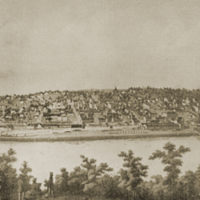
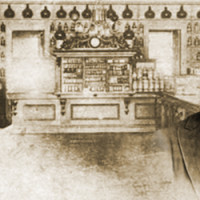
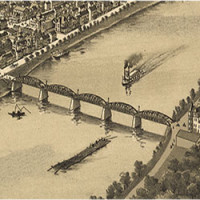
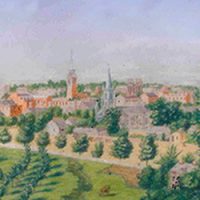
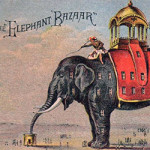
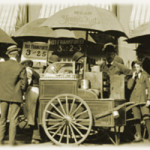
I have a token that says Applegates palace of flying animals from Atlantic City. Would you be interested in buying it? Thank you
Hi Carol –
Please send me a photo of the token, both sides, to my email address. You can find the address in the ‘Contact’ section.
Thanks, kindly
A.Packard
I found an “Applegate’s Palace” coin that appears to be in really good condition. It looks exactly like the one pictured above. Do you know about how much this coin may be worth?
Hi Brian –
There are two “Applegates Palace” tokens pictured above. The first is scalloped in shape, the other round like a typical coin.
Which one did you find?
Thanks,
Aaron Packard
I’m sorry. I should have been more specific. The coin I have reads “Applegates Palace” on the front and the large number 5 on the back. It is the sameas the first one shown above with the scalloped cut edges. My coin appears to be in as good of condition if not better than the one shown in the pictures.
Funny, I found this coin just 3 days ago while going through a bag of old foreign currency my dad had given me when I was around 10 years old. Nothing in the bag is of real value. Mostly 1920’s-1940’s coins but I also found this “Applegates Palace” token along with 2 rapid transit tokens. I’ve had a lot of fun researching these pieces and I’ve learned a lot! Thanks for your very informative article on the history of Mr. Youngs Atlantic City Pier. I think the real value to these coins and tokens is in the fun in researching them and the knowlegde and perspective gained while doing so!
You’re welcome Brian. Glad I could be of help with your research.
I agree with your sentiments. The study of exonumia provides a historical and human perspective that most Federal emissions can’t always provide.
As to your original question, its retail value is about $50
Hello I was hoping you could advise me on an item related to the pier. It is a small heavy chest covered with flowers and a replica of the pier. The engraving says Young’s Pier Atlantic City N.J. on the bottom the numbers 0214 are stamped. Its gold in color. Any advice you can give would be greatly appreciated.
Beverly Reed Scott
Hi Beverly –
My apologies for the delay in writing back.
Unfortunately I am unfamiliar with the item you describe. I do know that many different types of souvenirs were sold by Young’s Pier. Perhaps the item you describe is one of them.
Kind regards,
Aaron Packard
Thanx for the young’s pier information.
I have 2 admit one celluloid admission tickets.
The 5 cent is 2 and 15/32″ wide by 1 and 15/32 tall.
The 10 cent is 3 and 31/32″ wide and 1and 31/32″ tall.
Any idea of their value? Have you seen any sell recently?
Is ebay as good as a place to sell?
Bill
Delighted to find your site and fascinating article. I give lectures on the history of photography in New Jersey that include James Applegate, the photographer and entrepreneur who built Applegate’s pier. There is a section on him in my article, “Nineteenth-Century New Jersey Photographers,” in New Jersey History, Fall-Winter 2004. May I have permission to use the images of the pier and the tokens in a future lecture? Gary
Gary –
Glad you found the article enjoyable. You may use the images of the pier and tokens for your lecture.
Thank you very much!